Earlier this January, Porsche uncovered a special 25th-anniversary edition celebrating the release of its first modern mid-engined sports car, the Boxster. When it was unveiled in 1996 just before the first thoroughly redefined 911 (the 996), the Porsche 986 Boxster was ill-received by the purists, especially due to cost-cutting techniques employed by Porsche while developing both cars.
Yet, when it hit the road, the 986 was in fact a rewarding driver’s car, just like the current generation which now even bears the legendary 718 name.

History has taught us that even the once unloved Porsches eventually mature and get the recognition they deserved from the very start. Such was the case for the 914, 944, 968, and the 928, but will the original Boxster 986 share the same fate now that it’s turning 25?
A quarter of a century later, the Porsche 986 is still seen as a dilution by hardcore fans, but it is gaining recognition by the wider enthusiast community.
While the early Boxster is still worth less than $10,000 and the Porsche Boxster S now at around $15,000, this is perhaps an ideal opportunity to talk about the prospect of the original Boxster as a future classic car, so we’re here to see what will (and what maybe won’t) make it one.
Background
In the early 1990s, Porsche was on a turning point in its growth, walking a thin line between being a specialized sports car company and a premium global manufacturer. It was considered to be big enough to start saving costs, yet pure enough to face the consequences from the community.
More importantly, Porsche was in financial trouble. The company’s 959 proto-hypercar might have been the most advanced car of its era, but it left Porsche in debt due to astronomic development and manufacturing costs.

In the late 1980s, Porsche ventured into developing several studies to expand its lineup, the most prominent being the 989 sedan concept. This car shared a strong DNA connection with the 911, but chief engineer Dr. Ulrich Bez developed it to be a V8-powered front-engined car. Ultimately, the project was ultimately scrapped in 1992 due to a lack of financial viability.
The global economic recession in the early 1990s didn’t help either, but Porsche had to do something about the 911 platform – a painful spot for the company showing signs of reaching its limit for over a decade.
By axing the 989, Porsche’s R&D team again focused on squeezing everything out of the 911, so the new 993 generation emerged in early 1994. The 993 borrowed some engineering traits from the 989, like rear multilink suspension and it also got improved 6-speed transmission and all-wheel drive with a viscous coupling unit derived from the 959.

Even with the 911 sorted out, there was the issue of Porsche’s front-engined models like the V8-powered 928 and the 944’s evolution 968 longing for a replacement. This duo of cars was rooted in the 1970s and the 1980s respectively, it aged quicker than the everlasting 911 and its sales hit rock bottom.
Development
Porsche truly needed additional models in its lineup to keep afloat, but instead of continuing to develop front-engined cars, the company went in another direction. The first step towards a refresh happened in late 1991 after the Tokyo Motor Show and the official development began in 1992, coincidentally with the decision to halt the 989 sedan.

Porsche realized that it needed a more affordable car with Porsche DNA, and it wasn’t a direct successor to the 928 and the 968. On the contrary, Porsche sought inspiration in its past and in the industry’s present.
Porsche’s early years were marked by a much simpler car, the 356, while the present era birthed the Mazda MX-5 – a fun, engaging, and affordable roadster. The upcoming car was an amalgamation of the two, a cleverly designed open-top car inspired by the 356 and the 550 riding the wave of the great roadster revival.
-
-
986 Boxster Design Sketch. Porsche AG



At the time, the Style Porsche department in Weissach was headed by Dutch designer Harm Lagaay, a visionary designer who returned to Porsche just at the right moment to direct the 911 993’s redesign. Out of various concepts proposed during 1992, he focused on a proposition made by Pinky Lai and Grant Larson.
The final design was penned by Larson and Lai with Stefan Stark completing the interior. It was presented as the Boxster concept at the 1993 Detroit Motor Show. The car’s name was a fusion of its two main features. It was a boxer-engined roadster, so the concept was named Boxster.

Upon its unveiling, the Boxster met universal appraise; no wonder though, as it was a sleek, soft, and organic mid-engined roadster with an understated retro presence, echoing the 356 Speedster, the 550, and its 718 RSK evolution.
The focal point of the Boxster concept was its front fascia with a complex headlight design, a departure from simple oval shapes Porsche was known for. Yet, regardless of that, the 1993 proposal for the upcoming Boxster was an attractive roadster and it was a good start towards completing the production version.

The Boxster seemed like exactly the car Porsche needed. But, if everything seemed perfect up to that point, what went wrong and what enraged the traditionalists?
The truth is, Porsche needed way more than just a popular car to survive its early-1990s hardships. Sometime in 1992, the company consulted Toyota, an automotive giant known for its cost saving know-how and efficiency in production.
Toyota’s training greatly decreased production times and the occurrence of production errors, while cutting the cost of materials further helped with savings.

After testing throughout 1994 and 1995, Porsche debuted the production Boxster in 1996.
The critics were now quick to notice each and every flaw of the new entry-level Porsche. First of all, it was noticeable that cost-cutting had resulted in a subdued exterior design and cheaper interior quality. But, when the 911 followed, the purists couldn’t get over the fact that it shared exactly the same front end design with the 986 Boxster.
The Boxster was marketed from $39,980 and needless to say, it was a commercial success, especially on the recovering North American market. At a cost of angry die-hard fans, Porsche was finally on its road to recovery.
Now, understanding the complex background that led to the Boxster even existing, let alone being regarded as a shadow of its handsome publicly unveiled preview, it’s time to see what made it good, but also what were its flaws.

Chassis
Construction-wise, the Porsche 986 Boxster was a high-strength steel unibody with door sill boron steel reinforcements making up for its lack of roof followed by A-pillar reinforcements and a tubular roll bar in super-high-strength steel.
The engine and the rear suspension were mounted via a rear steel subframe, while the engine itself was largely covered by a sheet metal panel, effectively enabling the access to the engine only from the underside of the car.
At the expense of obstructing access to the engine from above, this construction enabled Porsche to include a small trunk in the back, making it somewhat more practical than the 911.
Body and interior
Just like the concept car, the Boxster was originally designed as a soft top roadster with an optional color-coded hardtop, but for both safety and practical reasons, the production Boxster grew compared to the concept car.

In the transition from concept to production stage, the Boxster also lost some of the key features from the Detroit show car. The neat air intake was raised from the door sill to the midsection of the rear wing and it grew in size, disrupting the clean profile of the 1993 Boxster concept.
The increase in Boxster’s size meant that Porsche could employ some of its cost cutting techniques to the body. That being said, the Boxster shared the whole front with the 996 911. The fenders, the hood, the bumper and of course the ‘cracked egg’ headlights were identical for the two and that’s what primarily enraged hardcore Porsche fans when the 996 saw the light of day.

Still, the Boxster was a handsome car in its era. Weighing around 2,800 pounds and with a claimed drag coefficient of just 0.31, it was properly engineered to be a fun driver’s car.
The interior of the original Boxster introduced a new design philosophy with more intricate surfaces, in light with the 1990s design trends.
However, the interior was of inferior quality compared to its predecessors, which was another point of harsh criticism for the 986 Boxster.
It’s worth noting that while the interiors for the Boxster and the 996 911 are similar in appearance, the main difference lies in the fact that the Boxster has three dials.


There are slight differences between the base and the Boxster S interiors, the most noticeable being the steering wheel; whereas the Boxster has a four-spoke wheel, the Boxster S got a sportier three-spoke design mirroring the one found on the 996 911.
Engines and Transmission
Initially, the Porsche 986 Boxster was powered by a water-cooled 2.5-liter flat-six producing 201 horsepower and 181 lb-ft of torque. The all-aluminum engine had dual camshafts, 24 valves and dry-sump lubrication and was mated to five-speed manual transmission or optional five-speed Tiptronic S automatic with shifting buttons on the steering wheel.
The initial output of the engine was fine for a 2800lb sports car, but the market demanded more, so Porsche addressed this in 2000 by increasing the displacement of the flat-six to 2.7 liters. 217 horses and 192 lb-ft, giving the Boxster better tractability at low revs.
Year 2000 brought the 986 Boxster S with a 250 hp, 225 lb-ft 3.2-liter flat-six and six-speed transmission. The bigger and more powerful engine required an additional radiator, so the Boxster S could be easily distinguished by its central air duct on the front bumper, as well as centrally mounted dual exhaust pipes.

In 2003, the Boxster’s power figures grew once again. The baseline 2.7-liter had a power bump to 225 horsepower, while the Boxster S was pumped to 258 ponies.
A certain number of Boxsters were equipped with Active Brake Differential, an ABS-assisted electronically emulated limited slip differentials, bearing #224 on the option list.
On the upside, the Boxster had decent power for the era, especially the punchy and driver-oriented Boxster S, our best guess for a future classic. Still, on the downside, cost cutting principles took its toll on the overall quality of the M96 engine.
The earliest Boxsters were especially prone to IMS shaft bearing failure, a breakdown most likely to happen on heavily exploited cars. Each M96 flat-six requires careful handling and responsible maintenance, so bear that in mind if you’re on the lookout for the original Boxster.
Suspension and Steering
The suspension was designed for the Boxster with lower A-arms in the front, and rear multilink suspension comprising lateral links, trailing links, and toe-control links, a design adapted from the 993 911. For damping, it had McPherson struts wrapped in coils and it featured anti roll bars on both axles.

In 2003, the baseline Boxster got the sporty springs and dampers, from the Boxster S, thus improving handling, while the Boxster S got longer and thicker stabilizer bars for an even more focused experience.
As expected, the steering was rack-and-pinion with 2.5 turns lock to lock and hydraulic power assistance.
Brakes, Wheels, and Tires
For stopping power, the Boxster S had ventilated steel rotors measuring 11.74 inches front and 11.5 inches rear paired with 4-piston calipers on both axles.
The standard Boxster was equipped with 16-inch five-spoke alloys with 205/55ZR16 front and wider 225/50ZR16 back tires. As an option, there were 17-inch alloys wrapped in 205/50ZR17 and 255/40ZR17 rubber.
The Boxster S got 996-sourced 17-inch wheels with 205/50ZR17 and 255/40ZR17 tires as well as larger 12.53in front and 11.78in rear cross-drilled brake rotors with 4-piston calipers also sourced from its upscale stablemate.
550 Spyder 50th Anniversary
For 2004, the final year of the 986 Boxster, Porsche unveiled a commemorative edition paying homage to one of its inspirations, the 550 Spyder.
Year 2004 coincided with the 50th anniversary of the 550, so the car was adequately named 550 Spyder 50th Anniversary and was built in exactly 1953 copies, marking the 550’s premiere at the 1953 Paris Motor Show.

This special Boxster S was exclusively painted in GT Silver Metallic shade from the Carrera GT and had Cocoa Brown full leather interior finish, a dark brown soft top roof, Bose sound system and Xenon headlights.
To give it a special edge, Porsche modified the ECU to produce 264 horses, 7 more than the Boxster S. Also, for a more focused driving experience, Porsche added a short shifter and sporty exhaust system with stacked exhaust ends.
The track was made wider by 5mm and Porsche fitted the celebratory car with M030 suspension package lowering it by 10 millimeters compared to the stock 986 Boxster S. As a $0 option, Porsche included 18-inch Carrera wheels.
This 550-inspired Boxster came at the price of $59,900 and low mileage examples now go for a bit over $20,000.
Porsche Boxster Today
In its fourth and latest generation, the Boxster has evolved into a cherished and highly regarded mid-engined performance car. The running generation is internally numbered 982, but it’s marketed as the 718 Spyder as of 2019.

The choice to call the Boxster 718 isn’t a coincidence though, as it was also the number of Porsche’s successor to the 550. And just like the car that evolved out of the 550 Spyder back in the 1950s, the 718 Spyder is comparatively lightweight, nimble around the bends and aimed at enthusiasts.
And while the Boxster won’t see even a fraction of the original 718’s racing glory, its name shows the brand’s intention to present the Boxster as a capable and somewhat affordable track car for gentleman drivers of the 21st century.
That intention is especially evident in two variants, the naturally aspirated GT4 and GTS 4.0, both sporting a mid-mounted, naturally aspirated 4.0-liter flat-six with 414 and 394 horsepower respectively.
Porsche 986 Boxster Legacy
So, will the Boxster be a future classic? It is plagued by some mechanical issues and it still has a chip on its shoulder, but there’s a big chance that decent and loved examples of the Boxster S will see a rise in value sometimes soon.
When it came out, the Porsche 986 Boxster might have truly seemed like a bad move for the brand, but in all honesty, it was all but it. Before Porsche set the 911 as its benchmark and based the whole brand identity on it, it was famous exactly for light, engaging, and fun roadsters, just like the 550 and just like the 718.

In a way, the Boxster is a return to Porsche’s humbler roots, when cars were all about lightness, both for fun and for track success. The times have changed though and the Boxster will never be regarded as the new 550 and it shouldn’t ever be.
For what it’s worth, appreciating it as a decent entry-level neoclassical Porsche is enough. For too long, the Porsche 986 Boxster has been a sitting duck, but now it’s time to give it a bit more appreciation because it definitely deserves some for being pure and fun at a fair price.


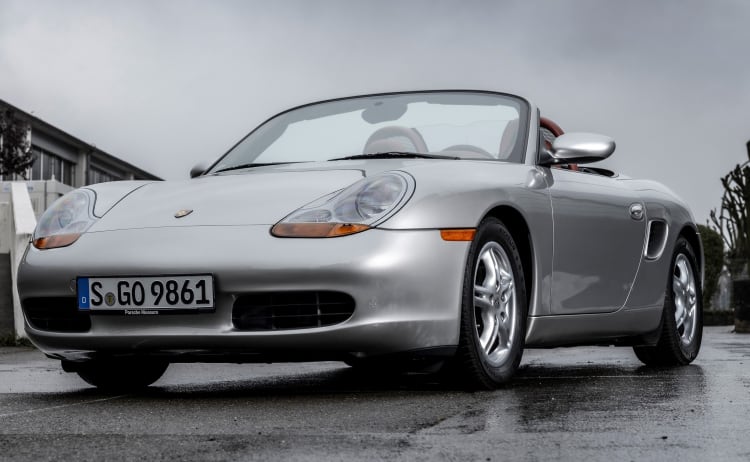



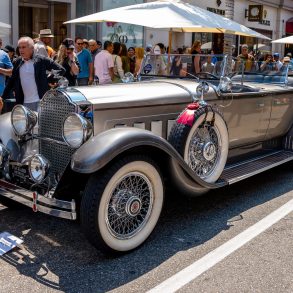
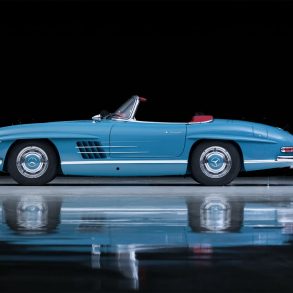
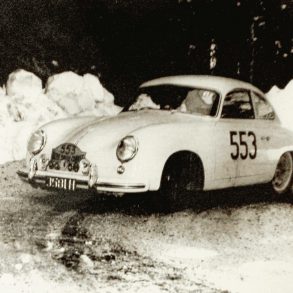
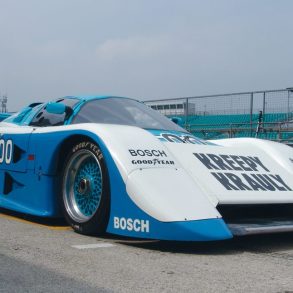
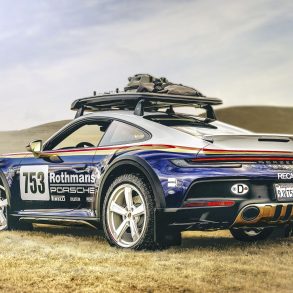
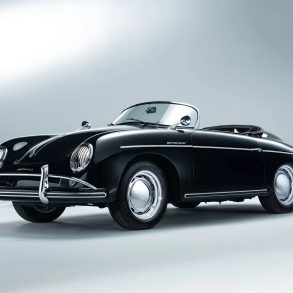

Appreciate this post, I really think too few people have driven the Boxster which is the most significant reason for under-appreciation. Having owned a 987.2 Cayman, 997.1 911 and now a 986.1 Boxster S I have to say this has been my favorite Porsche. When I get in and start the car there is only a single button I worry about in the interior; holding the top down button before taking off for whatever reason I can make up to drive it. The vehicle is carefree and as stated in the article, an homage to the simplicity of the great roadster’s in Porsche past which all the aural joys of Porsche’s modern mechanical staple, the flat-6.